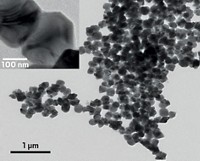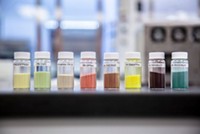Advertisement
Grab your lab coat. Let's get started
Welcome!
Welcome!
Create an account below to get 6 C&EN articles per month, receive newsletters and more - all free.
It seems this is your first time logging in online. Please enter the following information to continue.
As an ACS member you automatically get access to this site. All we need is few more details to create your reading experience.
Not you? Sign in with a different account.
Not you? Sign in with a different account.
ERROR 1
ERROR 1
ERROR 2
ERROR 2
ERROR 2
ERROR 2
ERROR 2
Password and Confirm password must match.
If you have an ACS member number, please enter it here so we can link this account to your membership. (optional)
ERROR 2
ACS values your privacy. By submitting your information, you are gaining access to C&EN and subscribing to our weekly newsletter. We use the information you provide to make your reading experience better, and we will never sell your data to third party members.
Synthesis
Bead Hopper Loads Up Microfluidic Devices
Method turns polymer bead sedimentation problem into a way to load beads into microfluidic devices for high-throughput experiments
by Celia Henry Arnaud
May 12, 2014
| A version of this story appeared in
Volume 92, Issue 19
Functionalized polymeric beads are commonly used as substrates for high-throughput syntheses and analyses carried out in microwell plates or vials. Their small size also makes the beads a perfect match for flow-through microfluidic systems, but loading them into the devices before they fall out of suspension is difficult. Brian M. Paegel, Alexander K. Price, and Andrew B. MacConnell of Scripps Research Institute Florida have now turned this tricky sedimentation problem to their advantage for loading bead libraries (Anal. Chem. 2014, DOI: 10.1021/ac500693r). They first construct a “bead suspension hopper” from a modified pipette tip. After filling the hopper with a suspension of beads, they allow the beads to settle in the tip, from which they are dispensed into a fluid stream—more than 100,000 beads can be dispensed in a few hours. After the beads are released, they are encapsulated in oil droplets, which function as individual reactor cells. The researchers demonstrated the device with an HIV-1 protease activity assay and with a protein evolution experiment. “The suspension hopper should effectively remove any barriers to using suspensions as sample inputs, paving the way for microfluidic automation to replace robotic library distribution,” the researchers write.





Join the conversation
Contact the reporter
Submit a Letter to the Editor for publication
Engage with us on Twitter